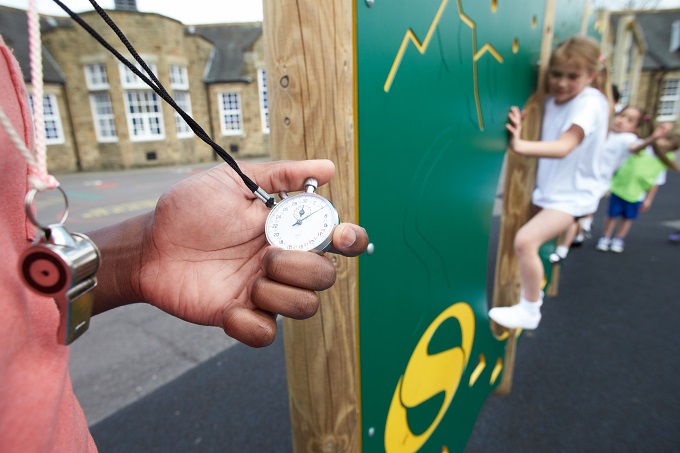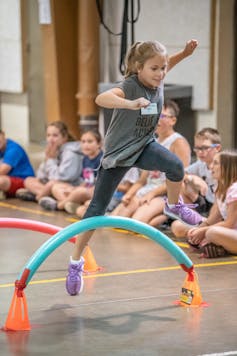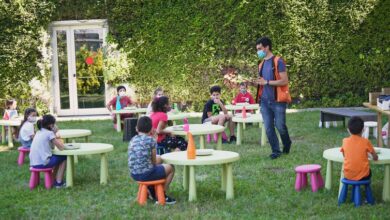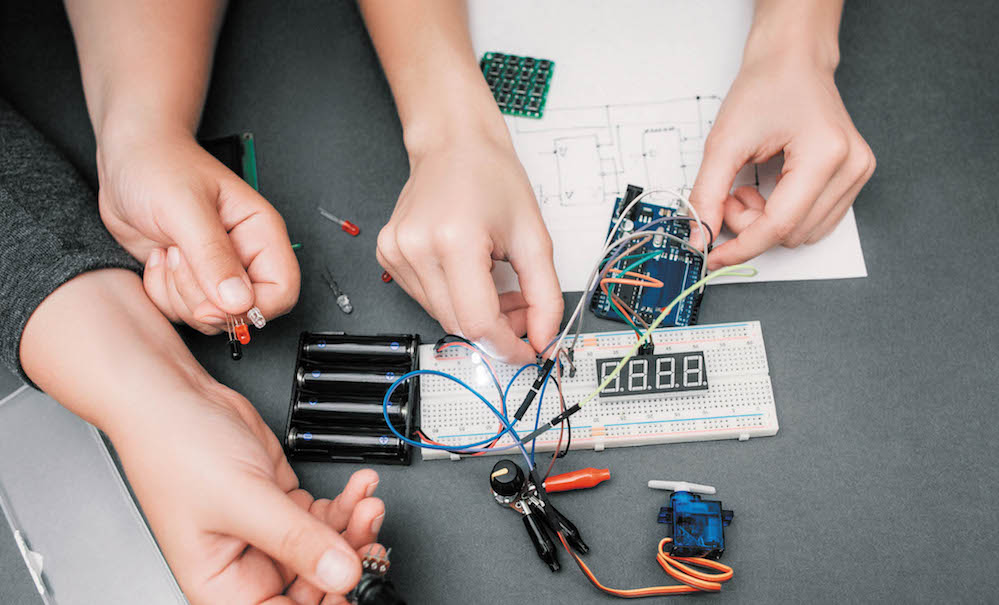Here’s how Aussie kids can move more at school, Nordic style

Inactivity in school children has been in the news again with the release of a study into the health of Australian 11-12 year olds from around the country.
The 1,800 person study found most children were healthy. But there was room for improvement in areas including physical activity and weight.
It’s a different story for Finnish children and their other Nordic counterparts. They outperform most other highly developed nations when it comes to childrens’ physical activity levels and obesity rates.
So what can Australia’s school system learn from the Nordic approach to physical education?
Active kids do well, wherever they are
Throughout the world, physical education is recognised for its contribution to education itself (teaching movement skills), development of personal and social skills (including learning rules, strategy and cooperation with others) and of course children’s physical health.
More research is also suggesting physical activity (which in school, is achieved through physical education and active play during break periods) is positively associated with educational attainment, particularly in maths. In other words, active kids tend to do better at school.
Does the curriculum need to be more specific?
The Australian national curriculum combines health and physical education as one learning area.

The health component sets out to teach children about many aspects of health, including alcohol, nutrition, relationships and sexuality. The physical education component offers children the chance to take part in games, adventure activities, fundamental movement skills, sports and rhythmic movement activities such as dance.
The curriculum says children should engage in “regular movement-based learning experiences”. However how regular this needs to be and how long for is not specified or even recommended.
This contrasts with the Nordic countries which enforce weekly minimums for physical education in schools. For example, Denmark has a mandatory 60-90 minutes of physical education a week.
In Finland, physical activity classes are also mandatory. Data suggests primary and secondary schools provide an average two hours a week. The Norwegians provide an average two to three hours a week.
How about specialist teachers?
Delivering effective physical education classes requires a varied skill set, including:
- motivating children
- developing skills
- managing behaviour
- engaging children, particularly ones with lesser skills, and
- modifying activities to challenge children with different needs and abilities.
Classroom teachers often report they are not fully equipped to plan, implement and assess physical education lessons.
So Nordic countries are aiming to only use specialist physical education teachers.
Specialist physical education teachers are also better at motivating students to engage in physical education and physical activity.
The Active Healthy Kids Global Alliance recommends all physical activity classes be delivered by specialist, tertiary-qualified physical education teachers.
However, a recent review by Active Healthy Kids Australia found no Australian states or territories are meeting this recommendation.
On the right track, but could do better
The Australian national curriculum is on the right track in many ways. Gone are the harrowing days of waiting to be picked for a team, being made to run for punishment, and measuring children’s weight or skinfolds in front of the class.
The national curriculum emphasises enjoyment and participation in movement-based activities, positive challenges, leading to personal and social outcomes, intended to set children up for lifelong activity.
However, by failing to mandate physical education time each week, we risk physical education being “pushed to the periphery” and losing out to other priorities.
Australia could learn from the Nords by:
- introducing nationwide mandatory physical education policy that ensures every school in Australia schedules weekly classes as part of the core curriculum;
- mandating every school in Australia delivers high-quality physical education through tertiary-trained physical education teachers for all students.
Without these mandates, great things are happening in some schools. However, other schools are slipping through the cracks. It’s time to learn from the Nordic countries to ensure high-quality physical education for all. Because the right physical education can lay the foundations for an active lifestyle, for life.
Katja Siefken, Lecturer, University of South Australia; Carol Maher, Associate Professor, NHMRC Career Development Fellow, University of South Australia, and Charlotte Pawlowski, Associate Professor, University of Southern Denmark This article is republished from The Conversation under a Creative Commons license. Read the original article.







